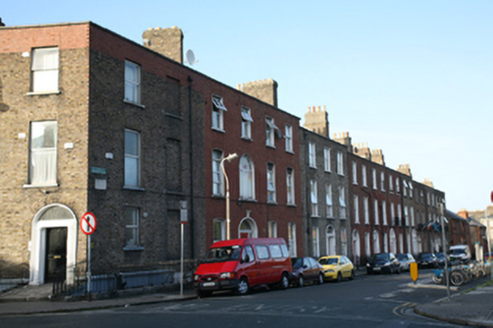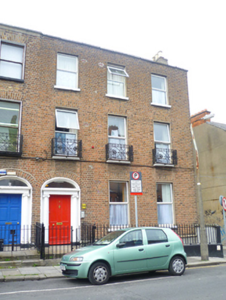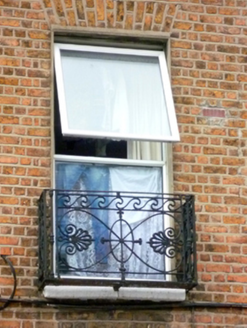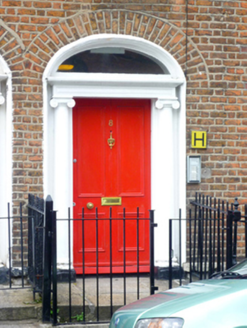Survey Data
Reg No
50010742
Rating
Regional
Categories of Special Interest
Architectural, Artistic
Original Use
House
In Use As
Apartment/flat (converted)
Date
1825 - 1830
Coordinates
315908, 235684
Date Recorded
07/09/2011
Date Updated
--/--/--
Description
End-of-terrace three-bay three-storey house over exposed basement, built c.1828, with three-storey return. Now in multiple occupancy. M-profile pitched slate roof behind parapet wall with granite coping and two rendered stepped chimneystacks rising from gable wall with clay pots. Red brick walls laid in Flemish bond on painted granite plinth course and rendered basement. Pebble dash render to gable end, smooth cement rendered to rear. Gauged brick flat-arched window openings, with patent rendered reveals, painted granite sills and replacement uPVC windows throughout. Decorative wrought-iron balconettes to first floor. Gauged brick three-centred arched door opening with moulded masonry surround and painted masonry Ionic doorcase. Flat-panelled timber door with brass furniture flanked by engaged Ionic columns on plinth bases supporting panelled lintel cornice and plain fanlight. Door opens onto granite platform, bridging basement area, enclosed by wrought-iron railing and steel gates to two granite steps opening onto street. Wrought-iron railing on granite plinth wall encloses basement area. Return has round-headed stair light with original six-over-six pane timber sliding sash window. Triangular plan rear yard enclosed by tall pebble dash rendered wall with granite coping.
Appraisal
This late Georgian townhouse terminates the eastern end of a terrace of ten similar houses on Sherrard Street Upper. With largely two-bay houses to the remainder of the terrace, this three-bay house stands out in the streetscape. It retains an intact doorcase and wrought-iron balconettes which add a decorative element. The street was named after the surveyor and clerk of the Wide Streets Commission, Thomas Sherrard, and was originally part of the Gardiner Estate. The building shares a parapet height and fenestration pattern with the rest of the terrace, thus maintaining a sense of uniformity throughout.







